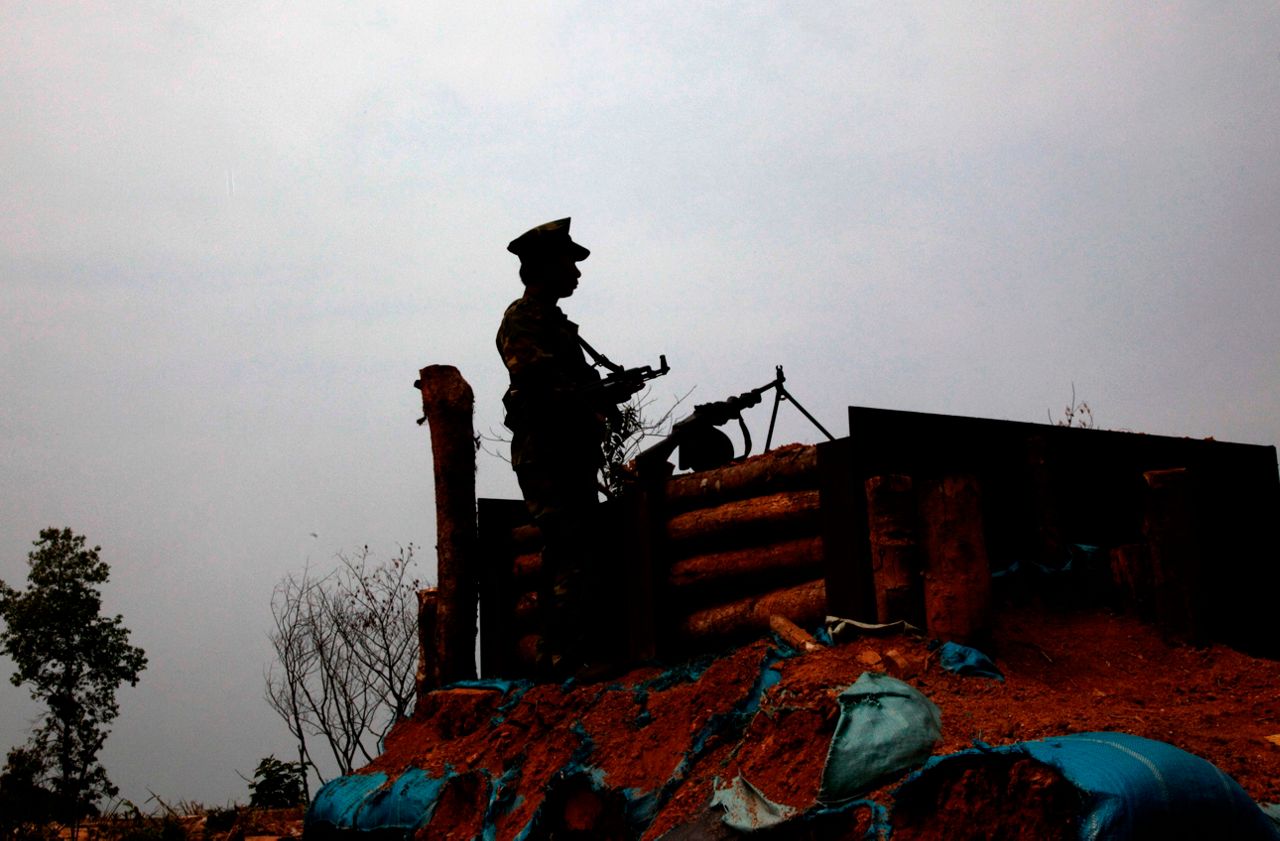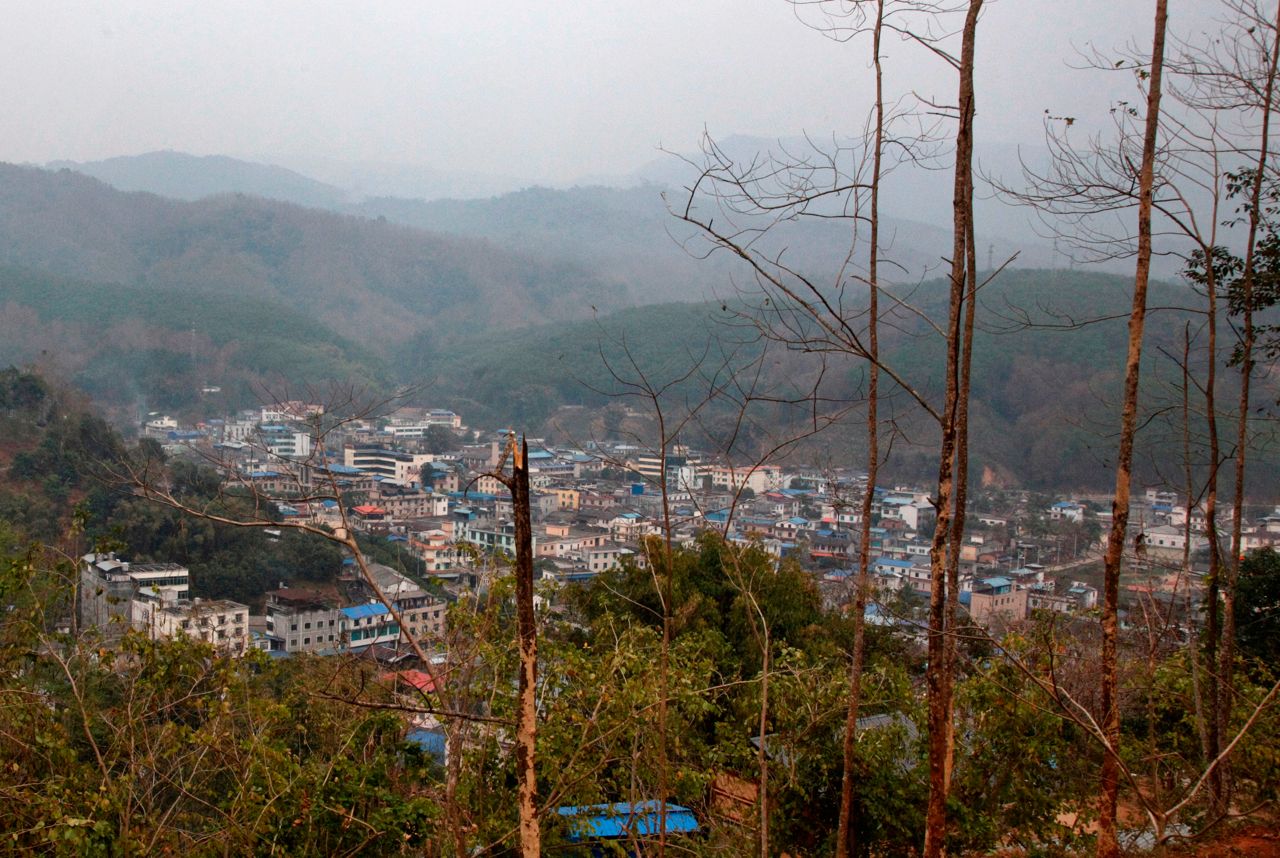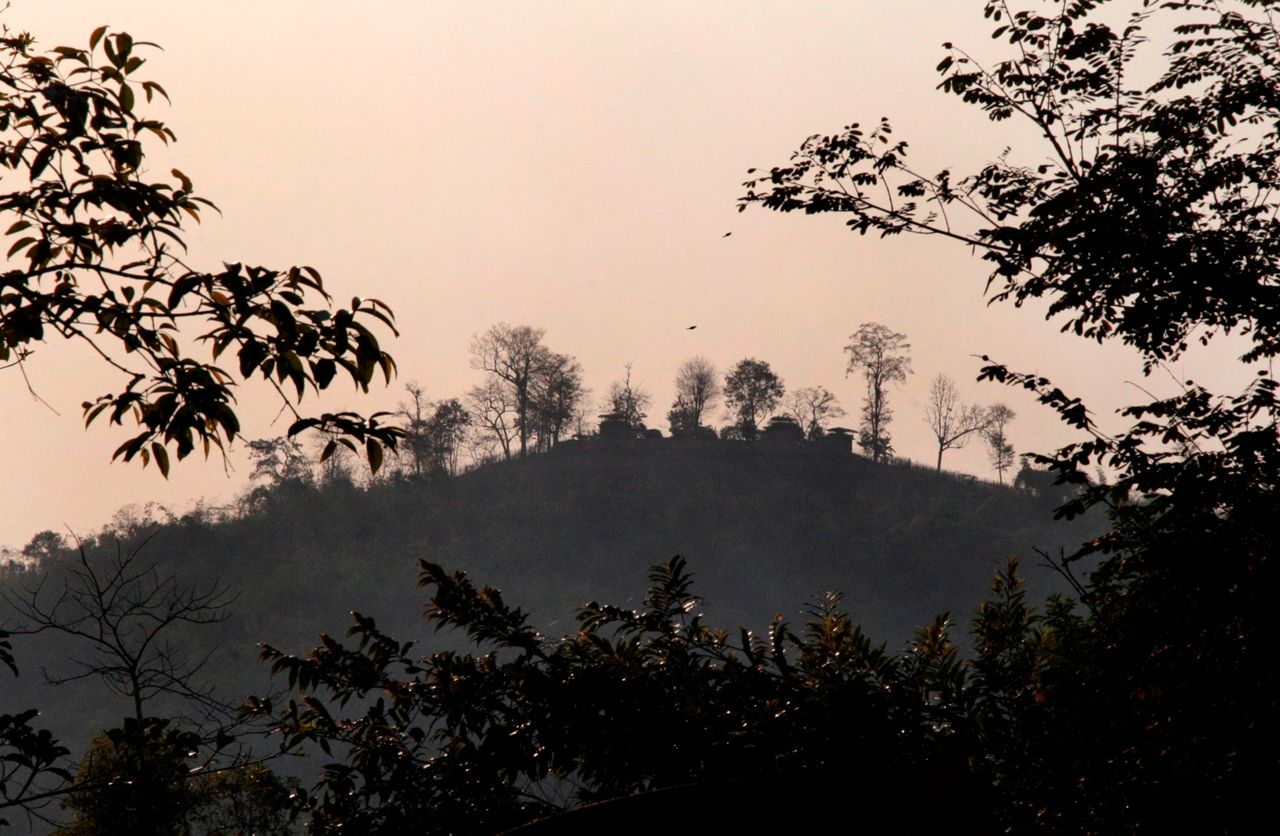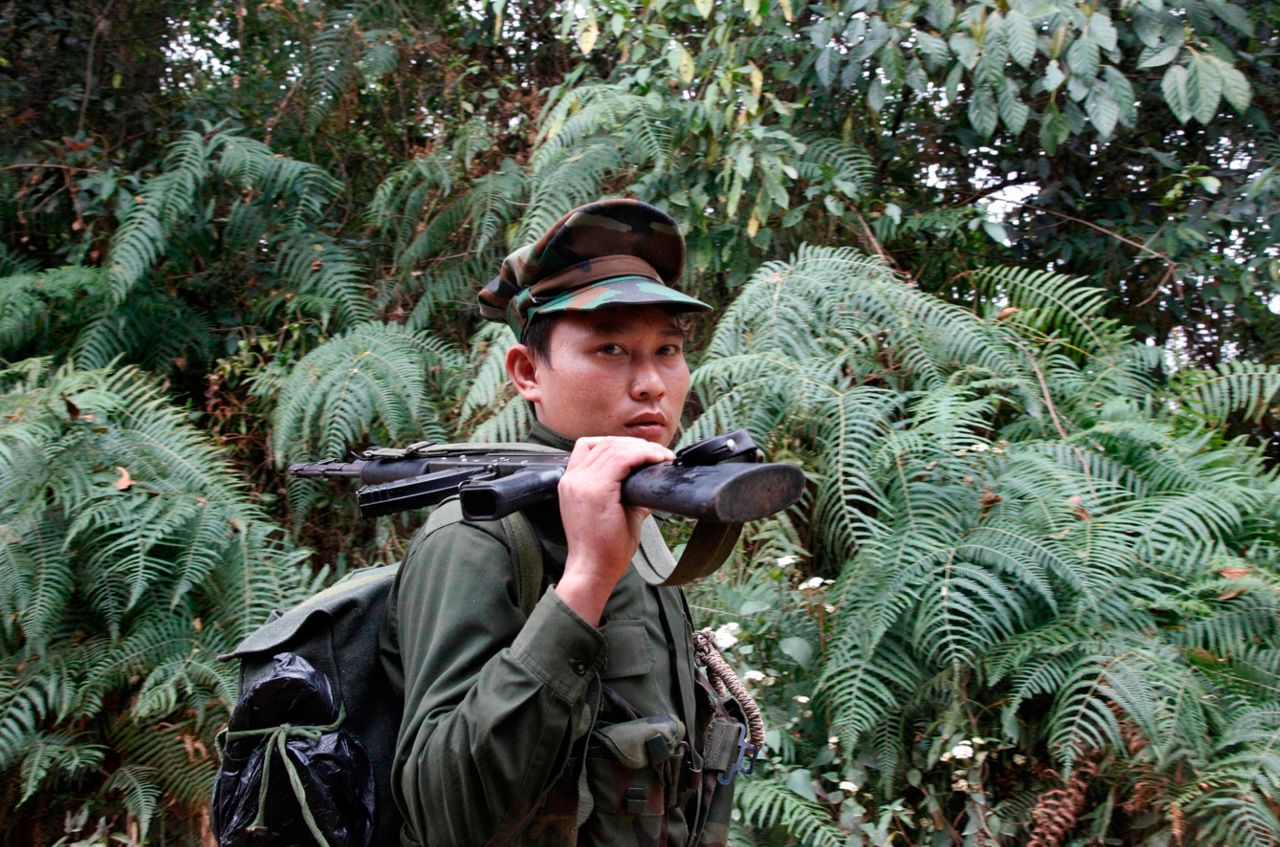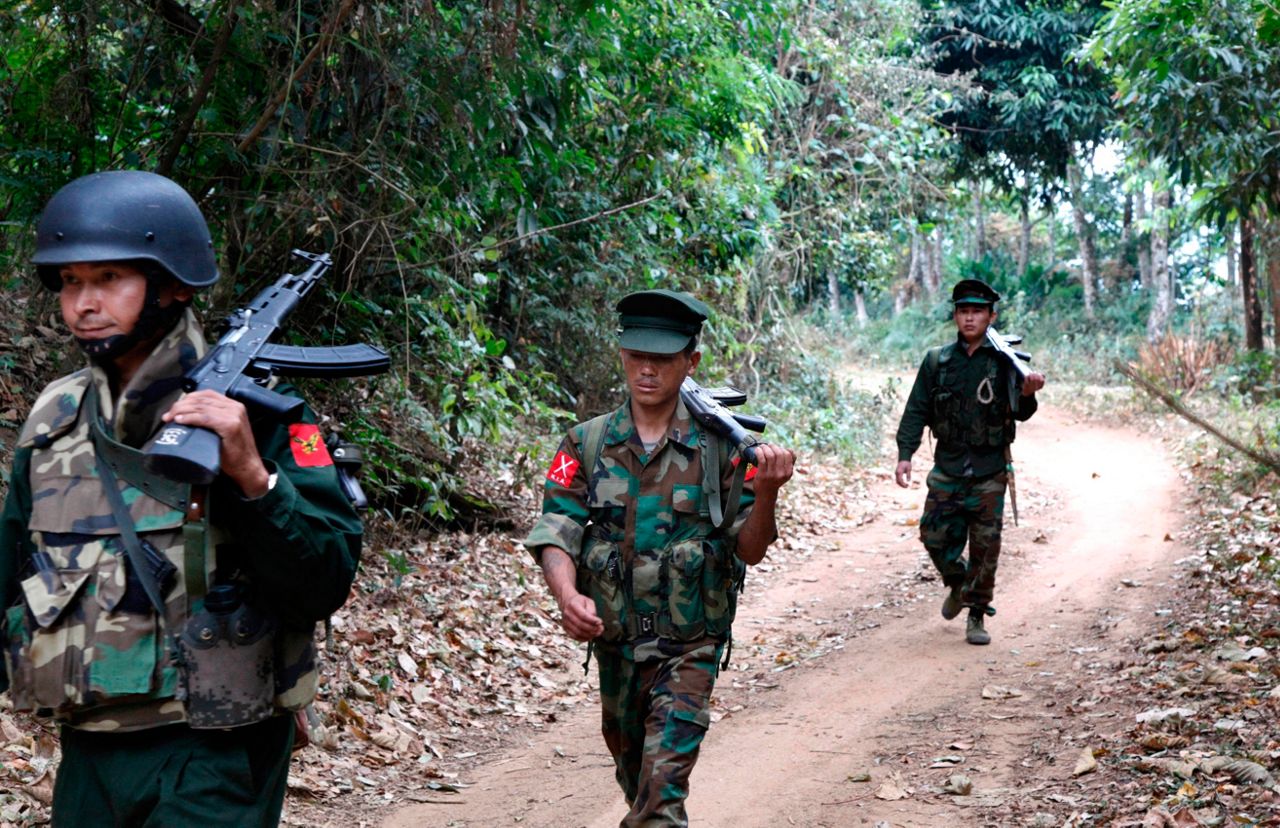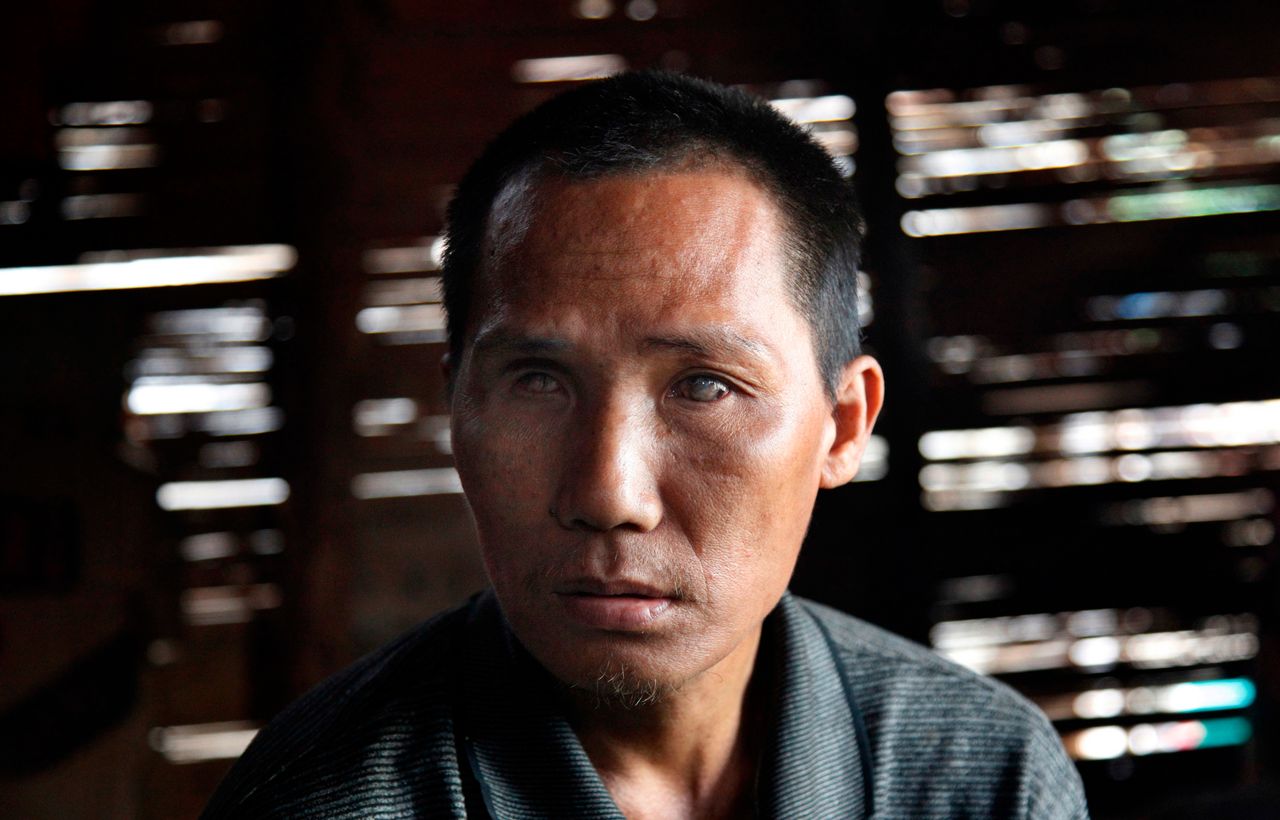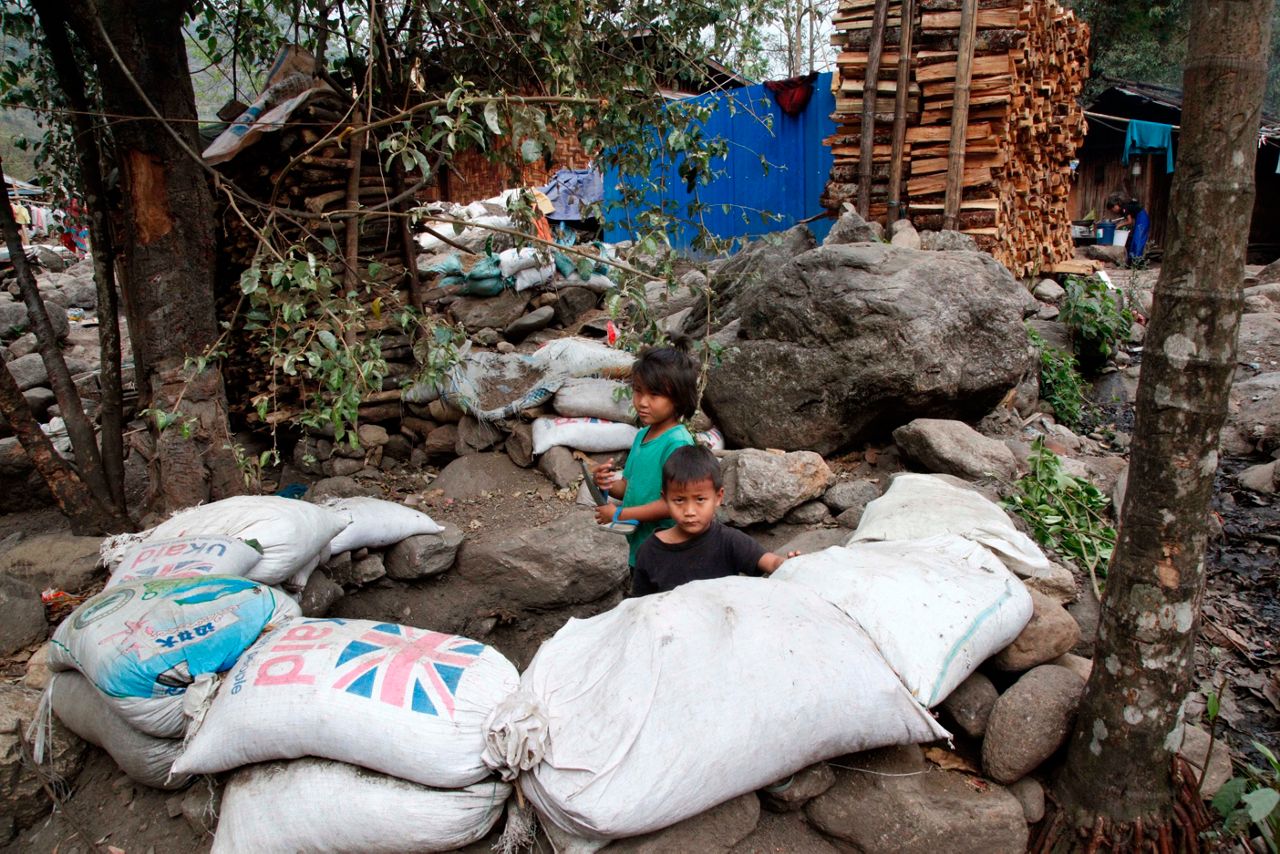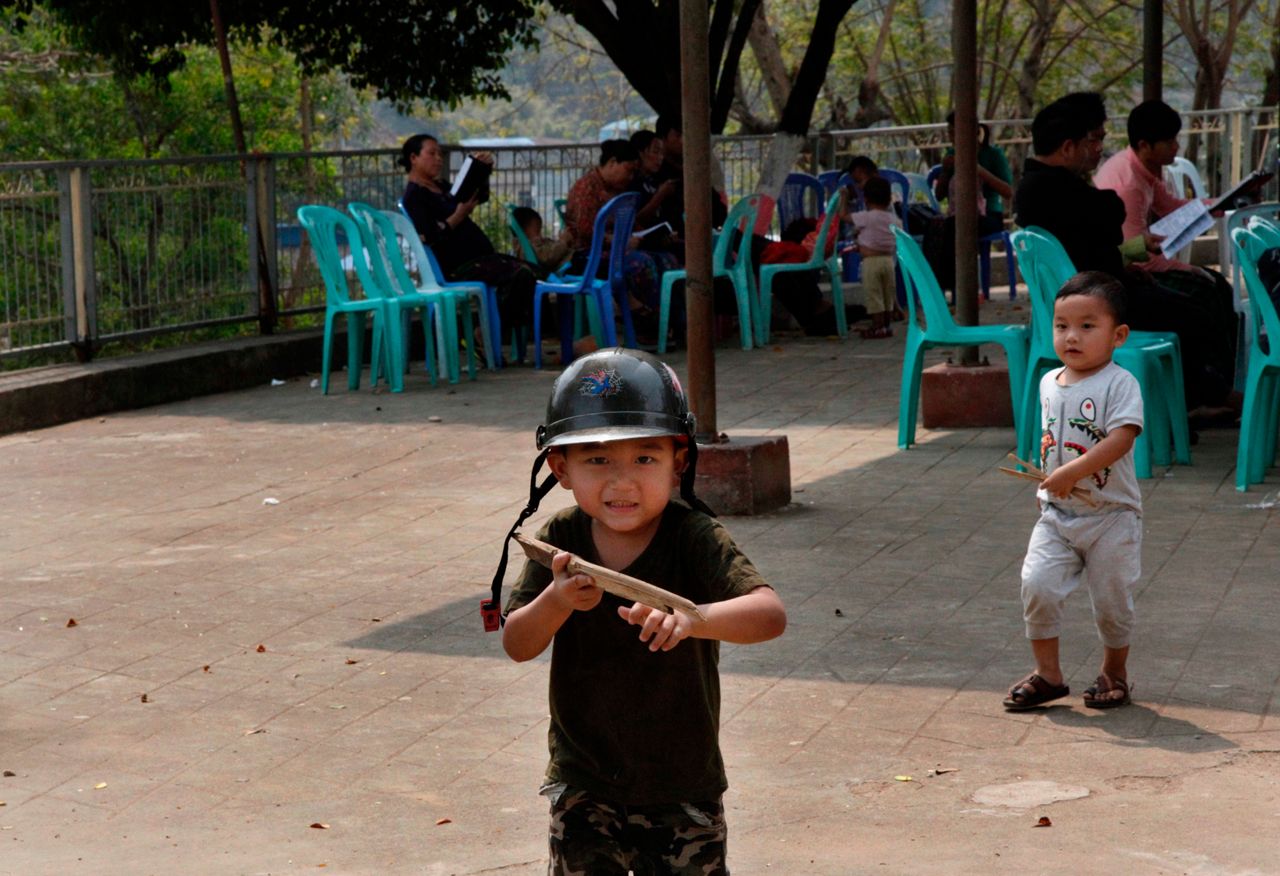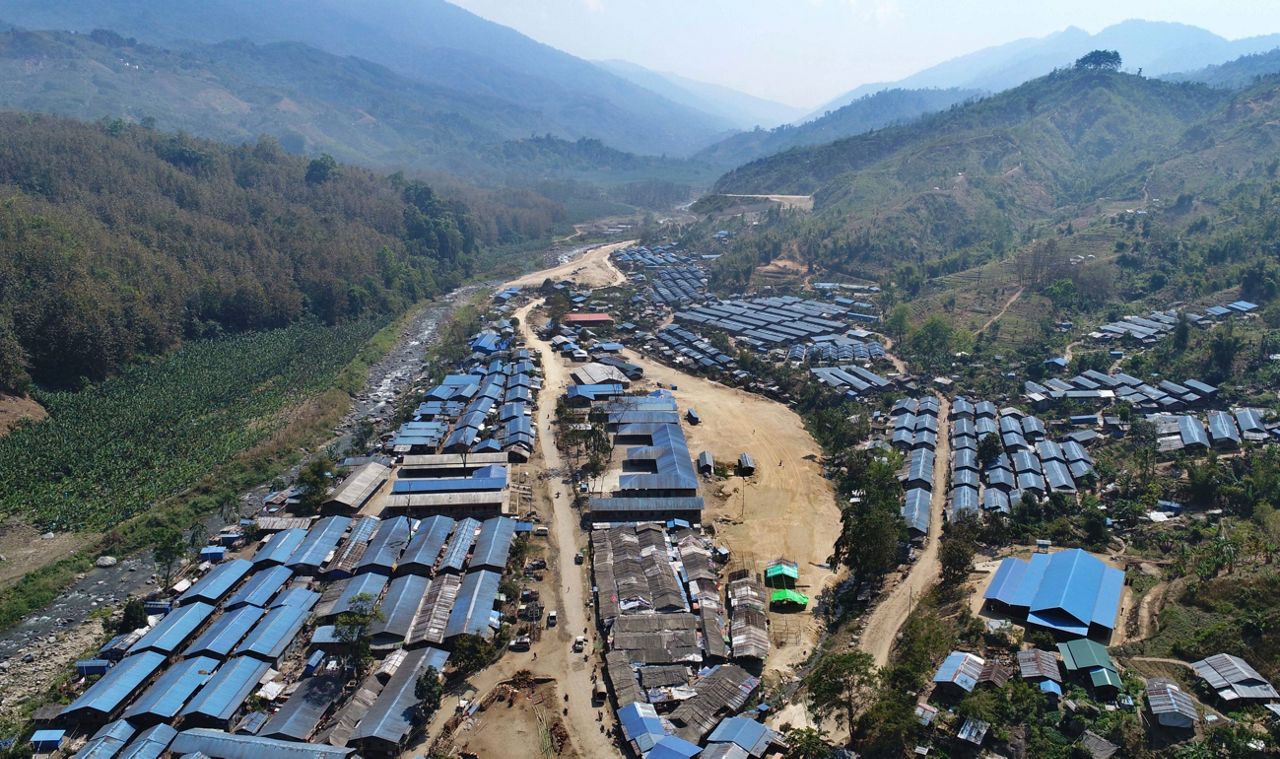LAIZA, Myanmar (AP) — On the front lines, the army is pounding rebels with airstrikes and artillery. In the displacement camps, terrified civilians are building bomb shelters of sandbags and stones. And everywhere in this troubled swath of Myanmar's north, there is a growing sense the conflict will only get worse.
While the world is focused on the plight of Myanmar's Rohingya Muslims, a civil war is raging here, pitting government forces against another of the country's minorities — the Kachins, mostly Christian. It's one of the longest-running wars on Earth, and it has intensified dramatically in recent months, with at least 10,000 people displaced since January alone, according to the United Nations.
The crisis, though, is also one of the world's most forgotten, overshadowed even in Myanmar by violence against Rohingya in the west, nearly 700,000 of whom have been driven into exile by the military. While the conflicts differ, they share a tragic theme, said Zau Raw, who heads a rebel committee overseeing humanitarian aid in the mountainous sliver of territory the militants control along the Chinese frontier.
Just like the Rohingya, the Kachin have begun to realize that "the army wants to wipe us out," he said. "This is a war to cleanse us."
The Kachin, who are mostly Christian, have fought for greater autonomy in this predominantly Buddhist nation since 1961. But their campaign is part of a much broader struggle for power pitting the ethnic Burman majority — who control the all-powerful military and top government posts — against dozens of ethnic minorities.
At least 20 of those groups have taken up arms since independence from Britain in 1948, and the government in recent years has signed cease-fires with 10 of them. Six other groups, including the Kachin, are still fighting.
Although military atrocities here do not match the scale of those documented against the Rohingya over the past year, a U.N. fact-finding mission in March reported "marked similarities" between the two conflicts.
Just as in Rakhine, the U.N. has received new reports of grave abuse by security forces, including killings, abductions, pillage, torture, rape and forced labor. And just like Rakhine, the government has restricted humanitarian access to desperate populations who have fled — around 120,000 people in Kachin and neighboring Shan states, according to local officials.
Those restrictions have grown significantly tighter since former opposition leader Aung San Suu Kyi took office in 2016, Zau Raw said. The government is now stopping the U.N. and most international organizations from reaching rebel zones altogether, leaving it to local Baptist and Catholic groups to distribute dwindling aid.
Last week, Kachin community leaders called on the government to allow medical aid to reach 2,000 people — including children and pregnant women — who have been trapped in a forest near the front with little food or water for weeks. There has been no response.
Authorities have alleged that some of the aid ends up in the hands of rebel fighters, which rebels and humanitarian organizations staunchly deny. Zau Raw said the government's objective was simple: They're trying "to make life more difficult for civilians" living in rebel areas, he said, adding that malnutrition among children is worsening.
Myanmar's military could not be reached for comment. But presidential spokesman Zaw Htay acknowledged human rights violations have occurred — although he said both sides were to blame.
"Whenever there is fighting, there is collateral damage," he said, adding that the government, for its part, is keen to end the war. "This is why we are urging the ethnic armed groups to sign a nationwide ceasefire."
Rebels of the Kachin Independence Army have met the military repeatedly for peace talks, but they have refused to sign a truce because the government does not recognize several insurgent groups they are allied with. The Kachin have also refused to recognize the 2008 constitution, which endows the military with tremendous power.
Like most other minorities, they view their struggle as an existential fight for survival and equal rights. The military, by contrast, sees the rebels as a "terrorist" force bent on destabilizing the nation, according to rebel Brig. Gen. Maran Zaw Tawng.
While both sides blame each other for reigniting hostilities in Kachin State in 2011 after a 17-year truce, there has only been one military victor since then: the vastly better equipped government army, which has seized more than 200 rebel outposts in the jade-rich state. The latest blow came in March when an entire rebel battalion retreated from Tanai, a region whose gold and amber mines brought in vital tax revenues for the militants.
A wounded guerrilla who survived the battle, Dee La, told The Associated Press that government forces pounded their positions for months with fighter jets, helicopter gunships and artillery. On the final day of fighting, he described being shelled in a non-stop bombardment so fierce, he and other rebels could not even carry away the bodies of five dead comrades.
"They were using drones to locate our positions, then they would hit us with airstrikes," he said from a hospital bed in Laiza, the small town that served as rebel headquarters. "We lost everything ... it was a failure."
The 39-year-old guerrilla was blinded in one eye and wounded in his arm when a land mine he was planting during their withdrawal detonated by accident.
Although both sides have been accused of planting mines and forcibly recruiting children into their ranks, Myanmar's army has gained a reputation for brutality that dwarfs that of any other group.
The U.N. Human Rights Council said it had received new reports of an old military tactic here: patrolling soldiers seizing civilians — many severely beaten or sexually assaulted — and forcing them to work as porters or human shields.
More reports of abduction and killings have emerged, too. In March, for example, the bodies of two Kachin men from a displaced camp in government territory were found dead in a shallow grave. Both men — like three others from the same camp a year earlier — had been missing for weeks after being detained by soldiers under murky circumstances.
The army has also fired mortar shells indiscriminately in and around Laiza for years, killing and maiming residents. The latest assault, on April 12, wounded two men on a nearby banana plantation; three other civilians have been killed in a similar bombing this month in Kachin state, according to the rebels.
After several days of shelling in December, the residents of two displaced camps, Mung Lai Hkyet and Woi Chyai, built dozens of bomb shelters on the ground beside their homes — a testament to the war's enduring terror. Similar bunkers had been built in other camps near Laiza after a wave of airstrikes in 2013.
"All we know is fear," said Lahtaw Kai Ring, a 35-year-old mother who had not finished building her own bunker when a nearby mortar blast forced her to scramble inside it on Christmas Eve with her two crying children, ages 5 and 8, in tow.
That nobody knows when or where more shells will fall "is what scares us most," she said, weeping as she recounted how her children now beg her to flee even at the sound of firecrackers.
Laphai Kai Nan, a 29-year-old teacher who was wounded in one of those assaults by shrapnel that tore into the back of her neck and ripped apart her jaw and half a dozen teeth, said the army's objective was clear.
"They don't care" where the bombs land, she said. "They're aiming to hit anyone who is Kachin."
Copyright 2018 The Associated Press. All rights reserved. This material may not be published, broadcast, rewritten or redistributed.




